New addition to the border animals page is a Scots Grey Parrot resident in Coldstream.
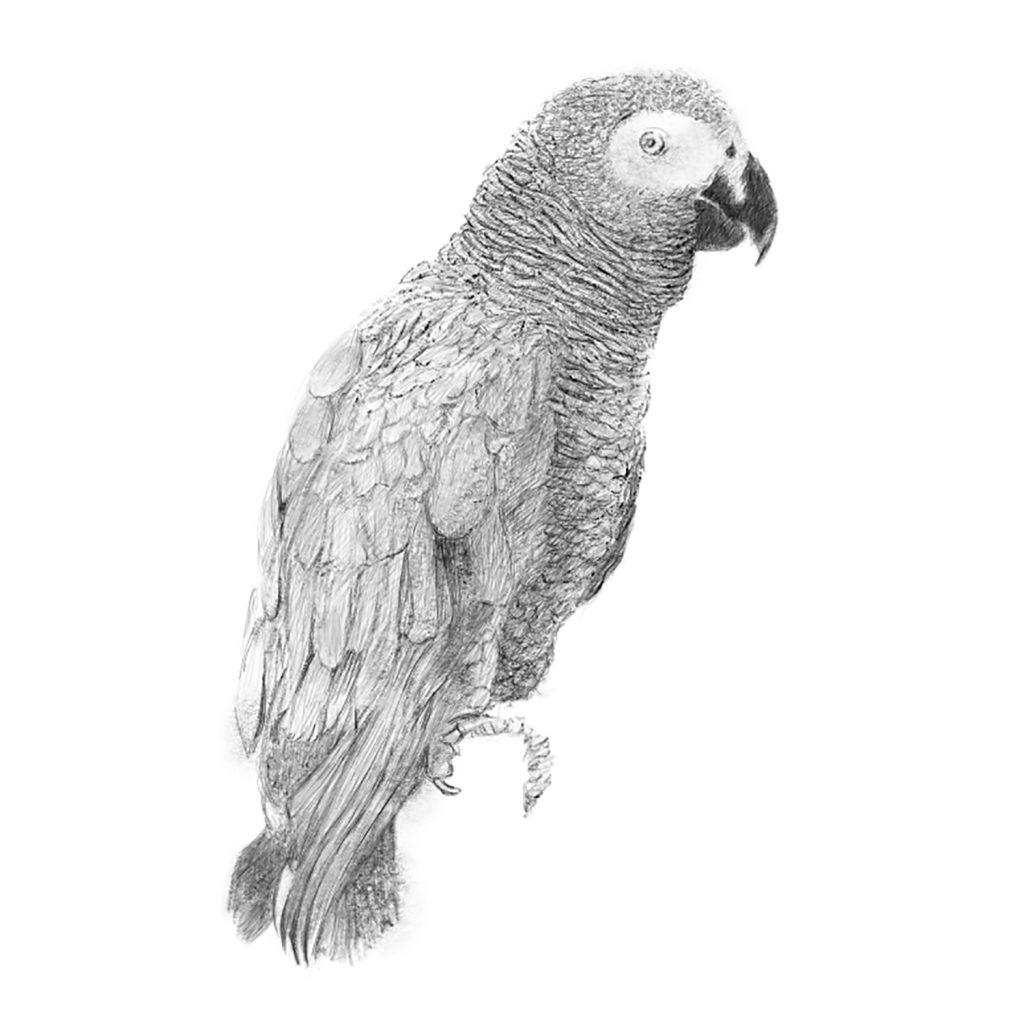
1/5. Digital drawing on iPad with Procreate. 15×11
New addition to the border animals page is a Scots Grey Parrot resident in Coldstream.

1/5. Digital drawing on iPad with Procreate. 15×11
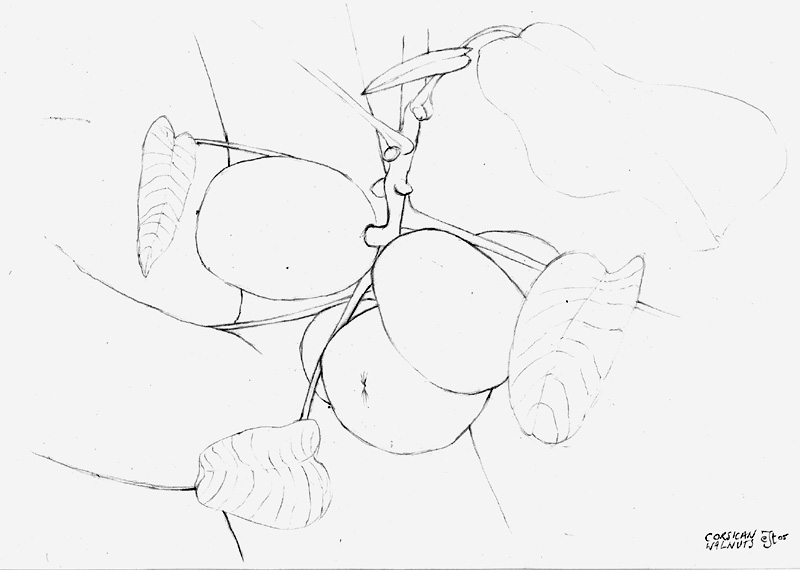
In 2005 on a summer visit to Corsica I drew a line drawing of walnuts growing on the vine. The drawing was made with a pencil on sketchbook paper. For 15 years I had not come across a walnut plant or anything like those defined fruits, leaves and branches. This summer, 2018 I saw figs growing rather incongruously in West Wales with a similar fruit and structure. Attracted by the same sun lit ripe fruit image I embarked on a drawing, but this this time I had an iPad and pencil to hand. I deliberated on what I should draw to reflect this group of fruits: line, shading?
I began by taking a number of smart phone photographs from a range of angles to achieve a useful composition. Not something I considered in corsica with a traditional lead pencil and sketchbook in hand. I began the figs drawing with it in mind to make a line drawing similar to the walnut drawing. First I created a layer in the iPad procreate app for my favoured photographic composition. A second layer became the space for a shading and a third for a line drawing. For the line drawing I selected the 6b pencil and a mix of ‘perfect pencil’ and ‘blunt pencil’ for the shading layer. I began by line drawing two of the figs to the left and their branches. I then swapped to the shading level and drew the figs to the right. Enjoying reflecting the shapes in both modes I went on to compare each by viewing them side by side by making each’s layer visible. Each had their own quality of image and I went on to completing each I their particular layer.
Drawing in line requires a lightness and variation of weight to create a line depicting the whole object, while shading demands an overall approach to the object and its volume. Like the Corsican walnuts both drawings include indications of the branch, stem and leaves structure to the plant to suit each technique. The line drawing with rather extended branch and stem with little detail of the leaves, while the shaded drawing takes the reverse approach, with more detail in the leaves and less attention to the branch and stems.
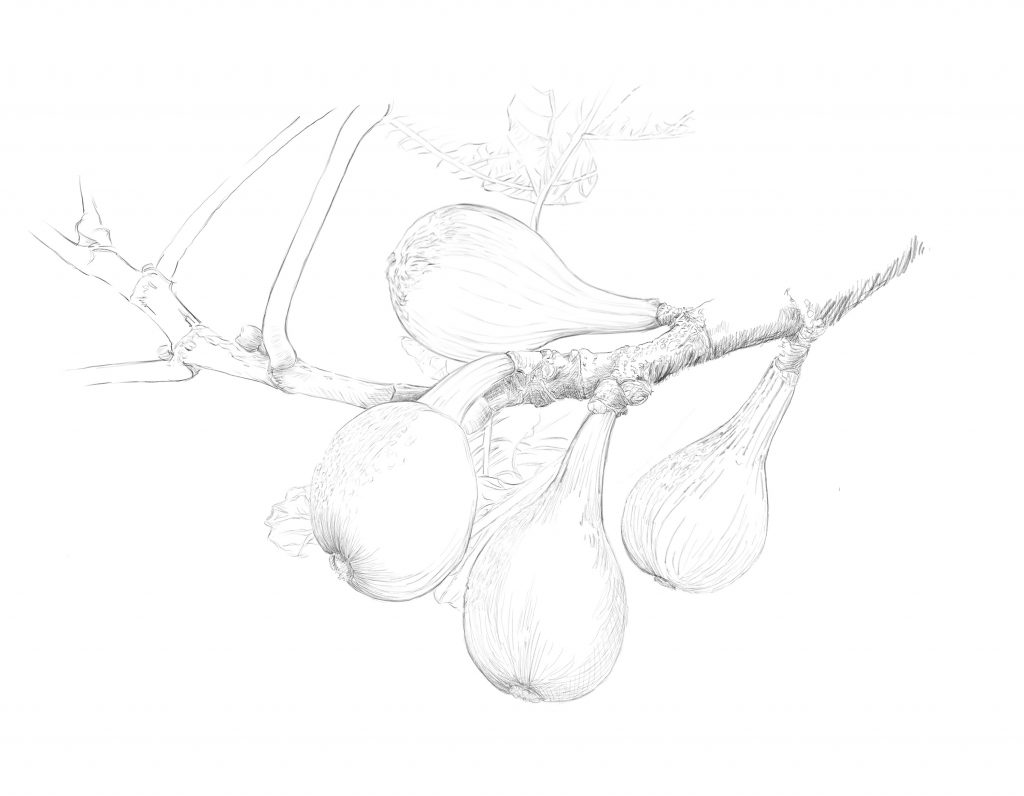
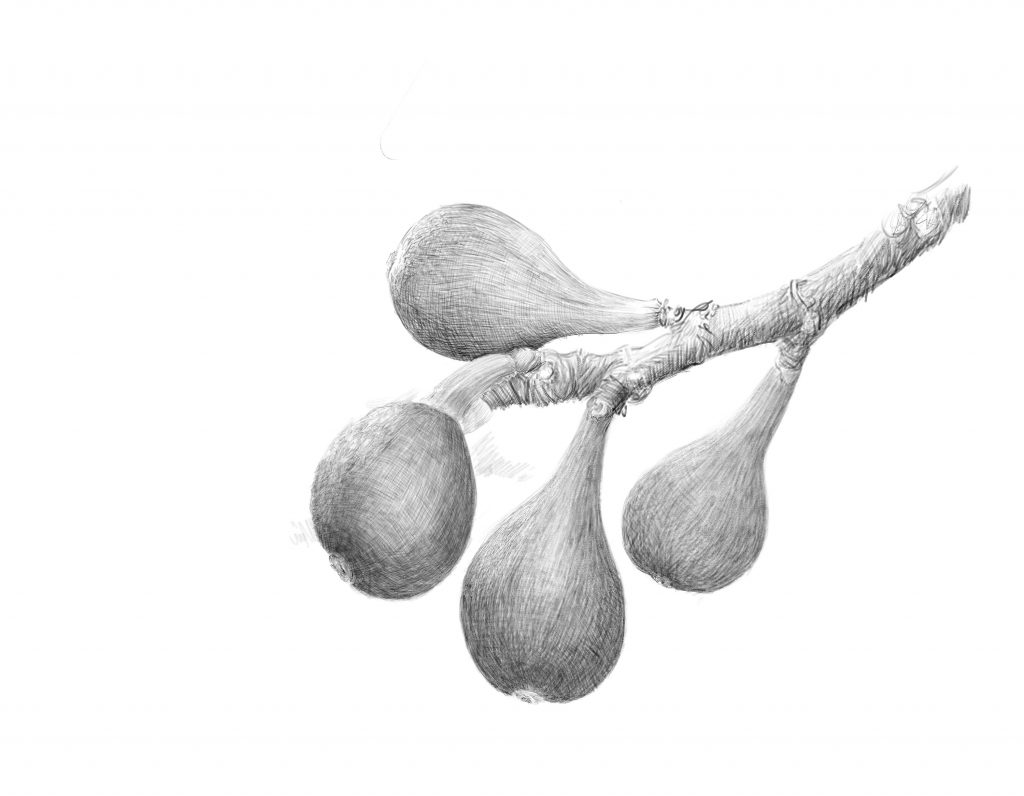
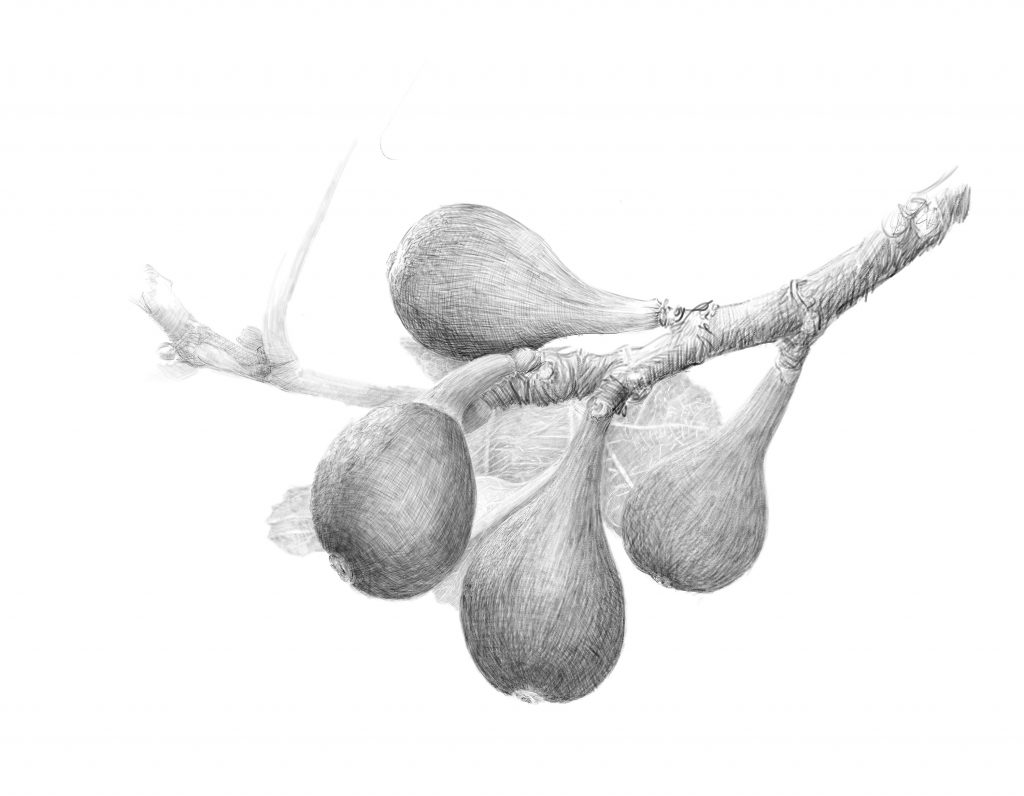
For the shaded drawing the leaves were added to give more depth to the fruit on the branch. Both drawings have their discreet qualities. However, out of interest and ‘just to see’ what it might be like to mesh the two I switched both layers to visible and a ‘new’ third drawing is revealed. The shaded drawing now had sharper edges. The more defined edges from the line drawing gives the third composite drawing more presence and the inclusion of the line drawn extended branches give more context to main subject – the figs.
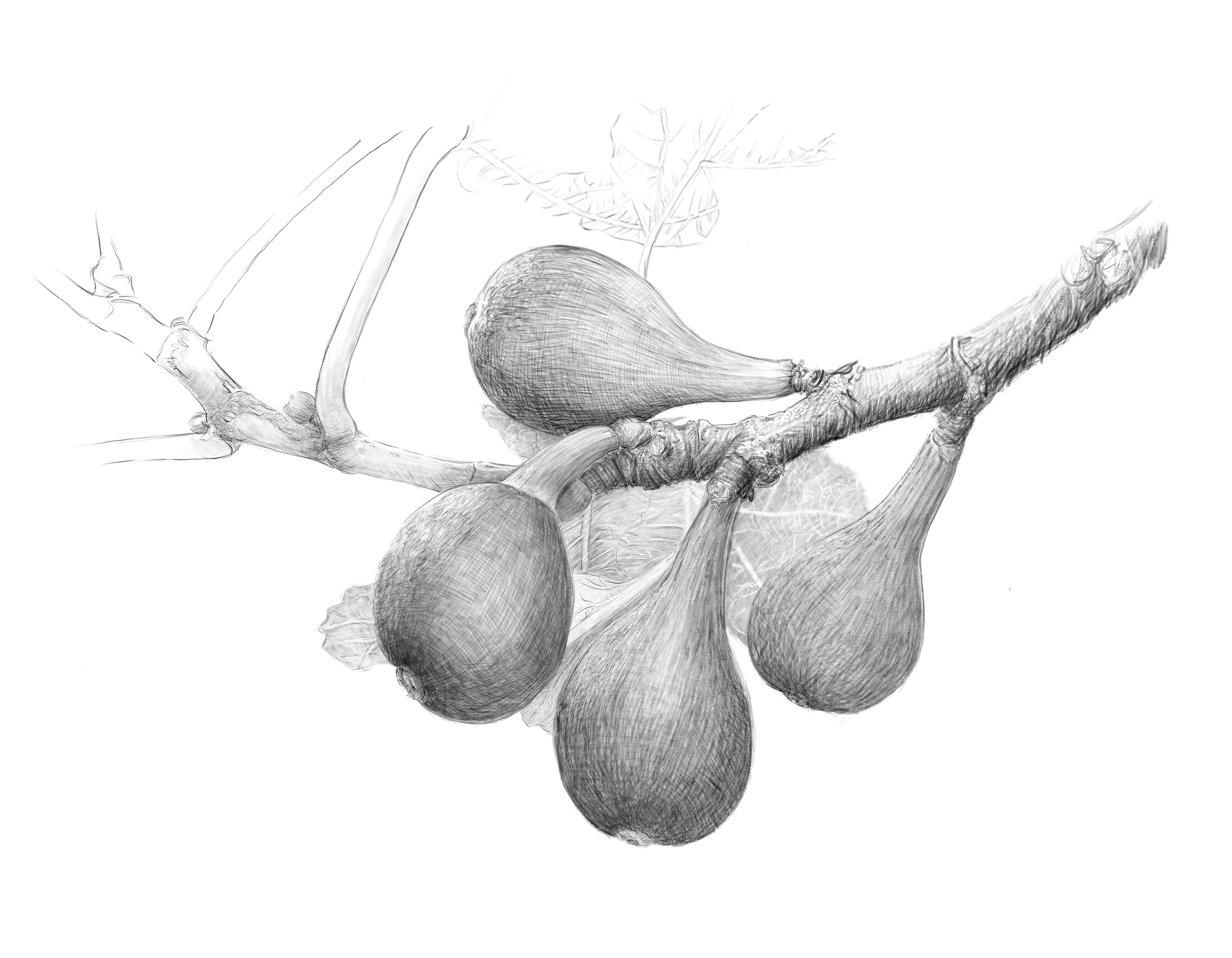
Click the Line,shading composite above image to view a moving imager capture of the drawings. https://vimeo.com/285645969
https://en.wikipedia.org/wiki/Walnut
https://en.wikipedia.org/wiki/Common_fig
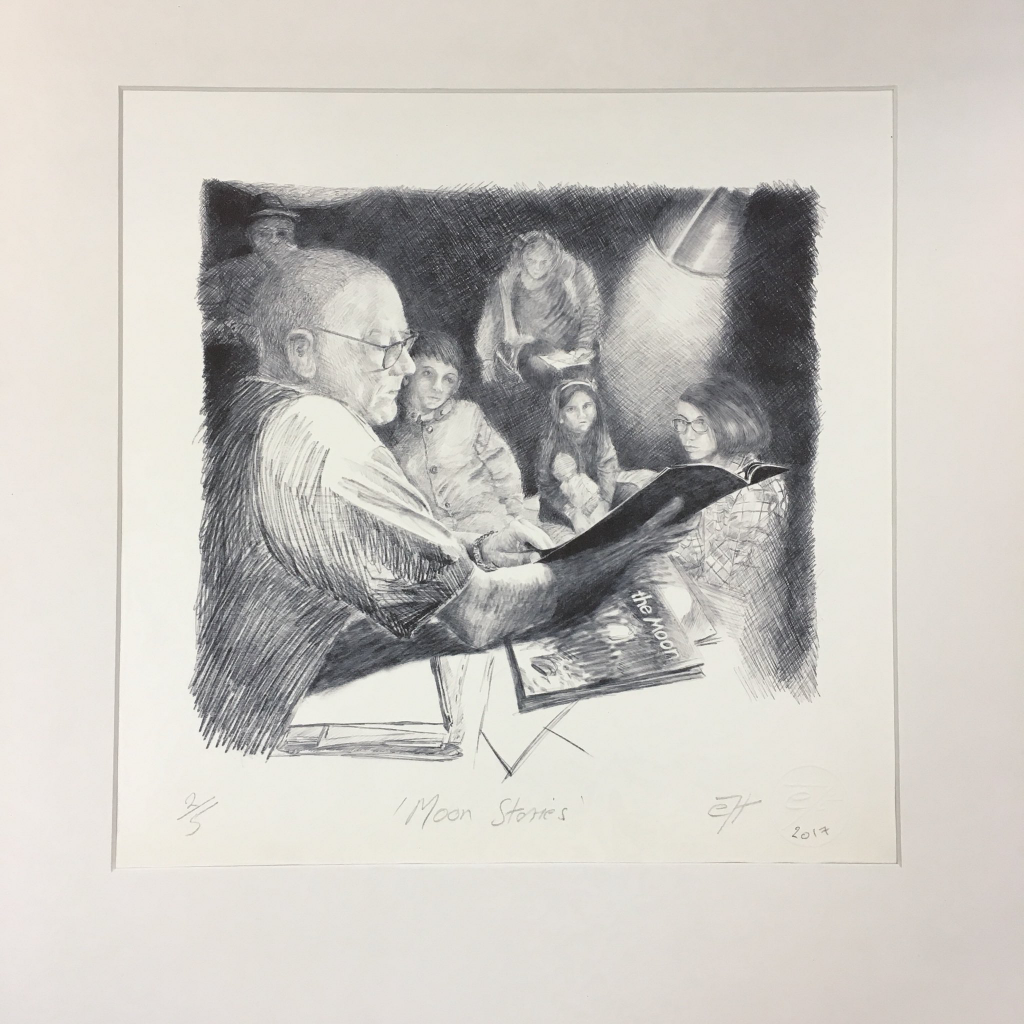
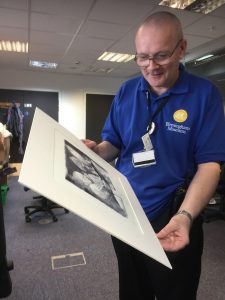
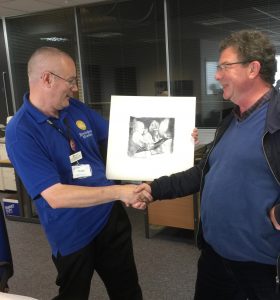
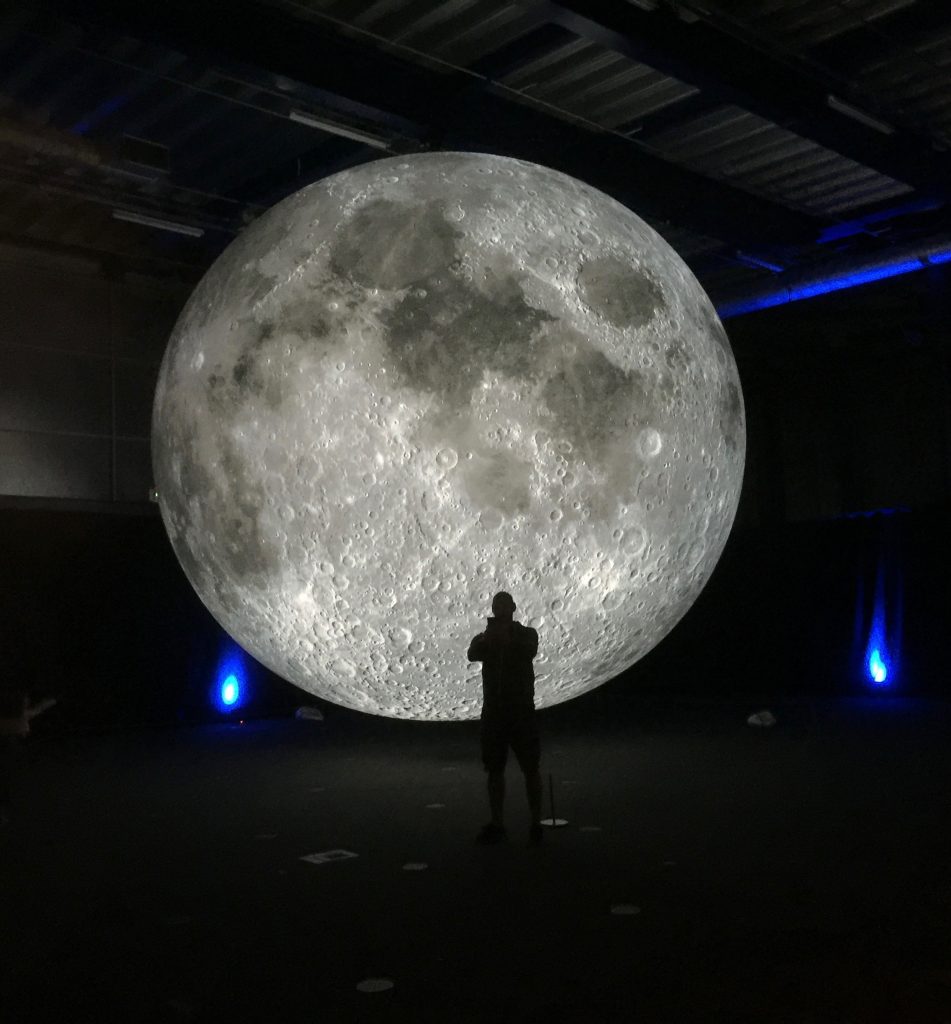
Museum of the Moon is a new touring artwork by UK artist Luke Jerram.
Measuring seven metres in diameter, the moon features 120dpi detailed NASA imagery of the lunar surface. At an approximate scale of 1:500,000, each centimetre of the internally lit spherical sculpture represents 5km of the moon’s surface.
Moon Story, Drawing and social media.
The original drawing was begun when the artist visited the Museum of the Moon exhibition and spotted a ‘moonlight’ in the corner in the dark expanse housing Luke Jerram’s massive moon. On a closer view the moonlight was a table lamp beamed on a book being read by Steve to an entranced family. The illuminated reader and family provided a strong composition to base a drawing on. The artist took iPhone pictures, transferred them to an iPad, into adobe procreate and using an apple pencil the drawing was created through a number of states. An early version was posted. on Instagram channel where Museum Manager Jessica spotted it, showed it to Steve who was surprised and impressed. Jess used Instagram to contact the Artist to let him know Steve would like a copy if possible.
Once the drawing was finished proofs were made on a high quality Cannon inkjet printer on to a range of papers before an edition of 5 were printed on 300 gsm aquarelle off white paper. Two months on from the Saturday encounter in the Museum of the Moon the 2nd print of the edition was presented to Steve who along with Jessica enjoyed seeing the mounted fine print. Of course it quickly appeared on the @thinktankmuseum feed.